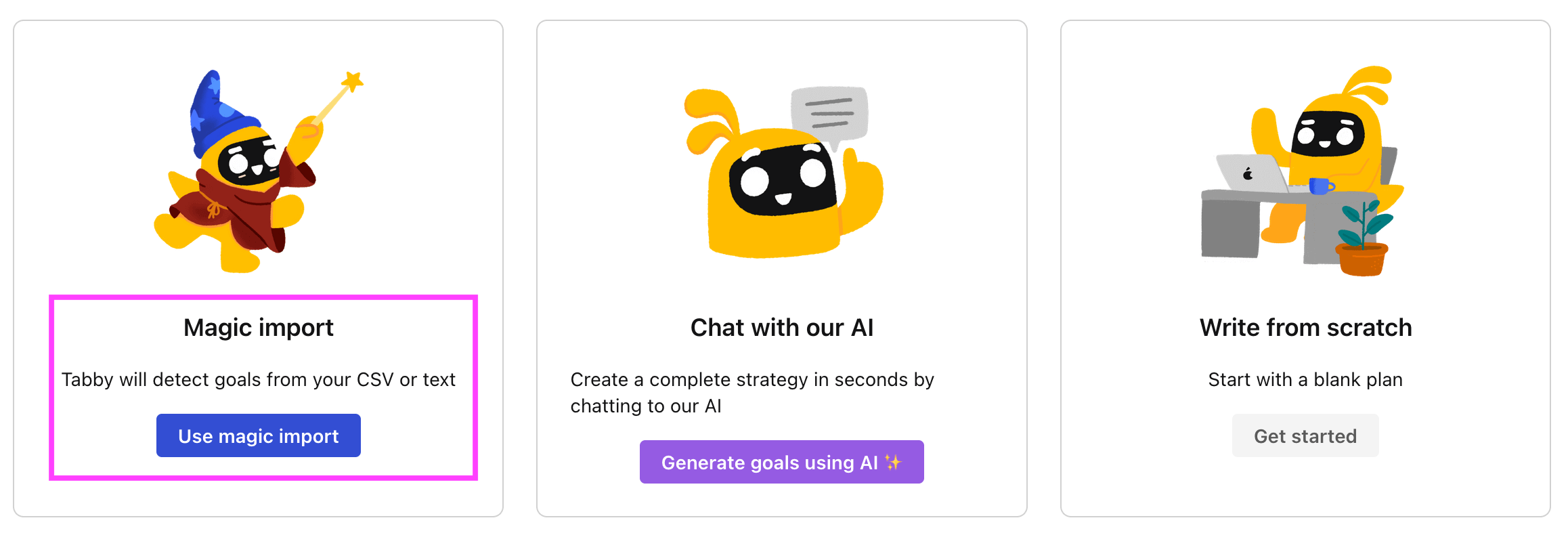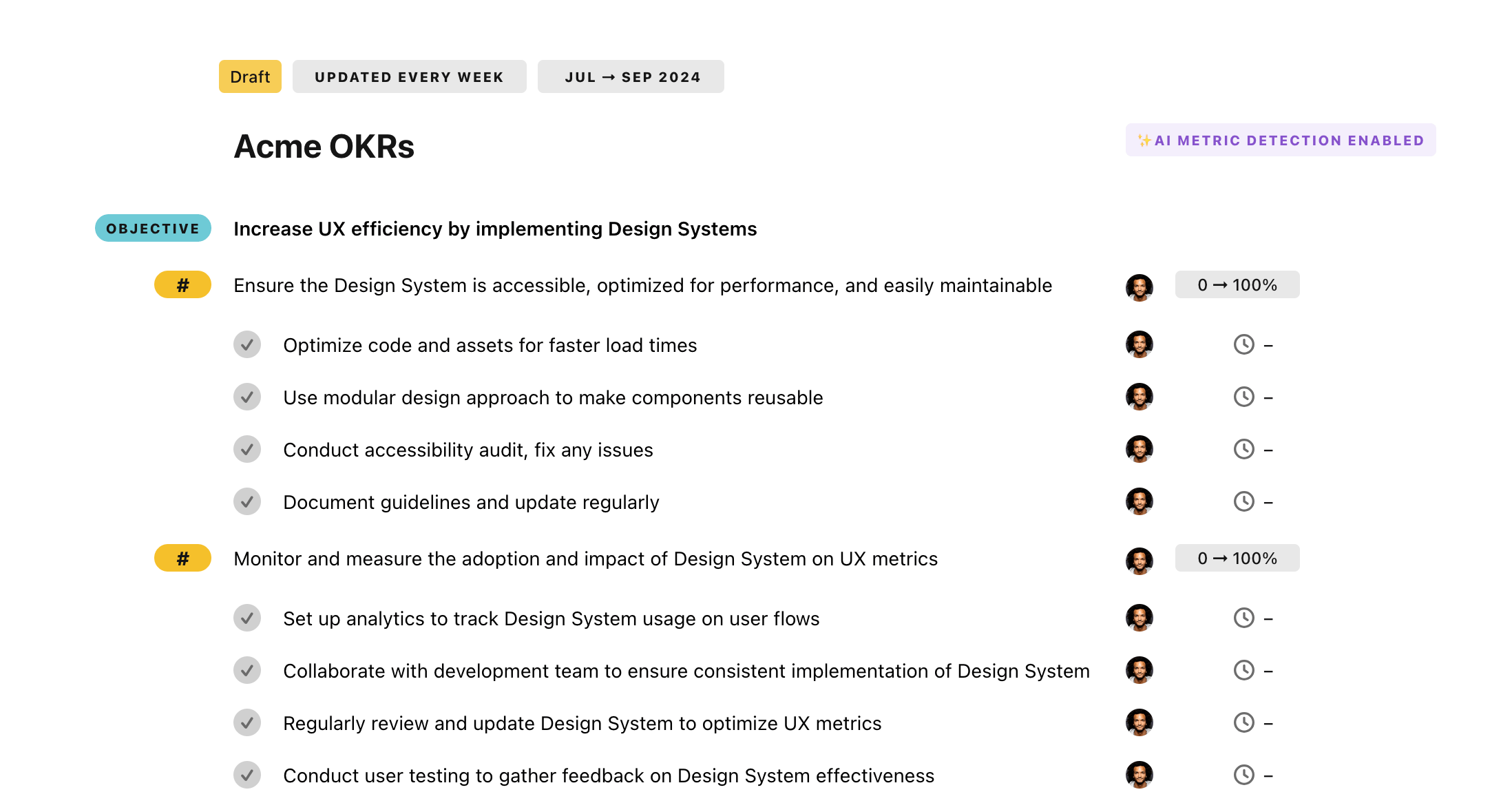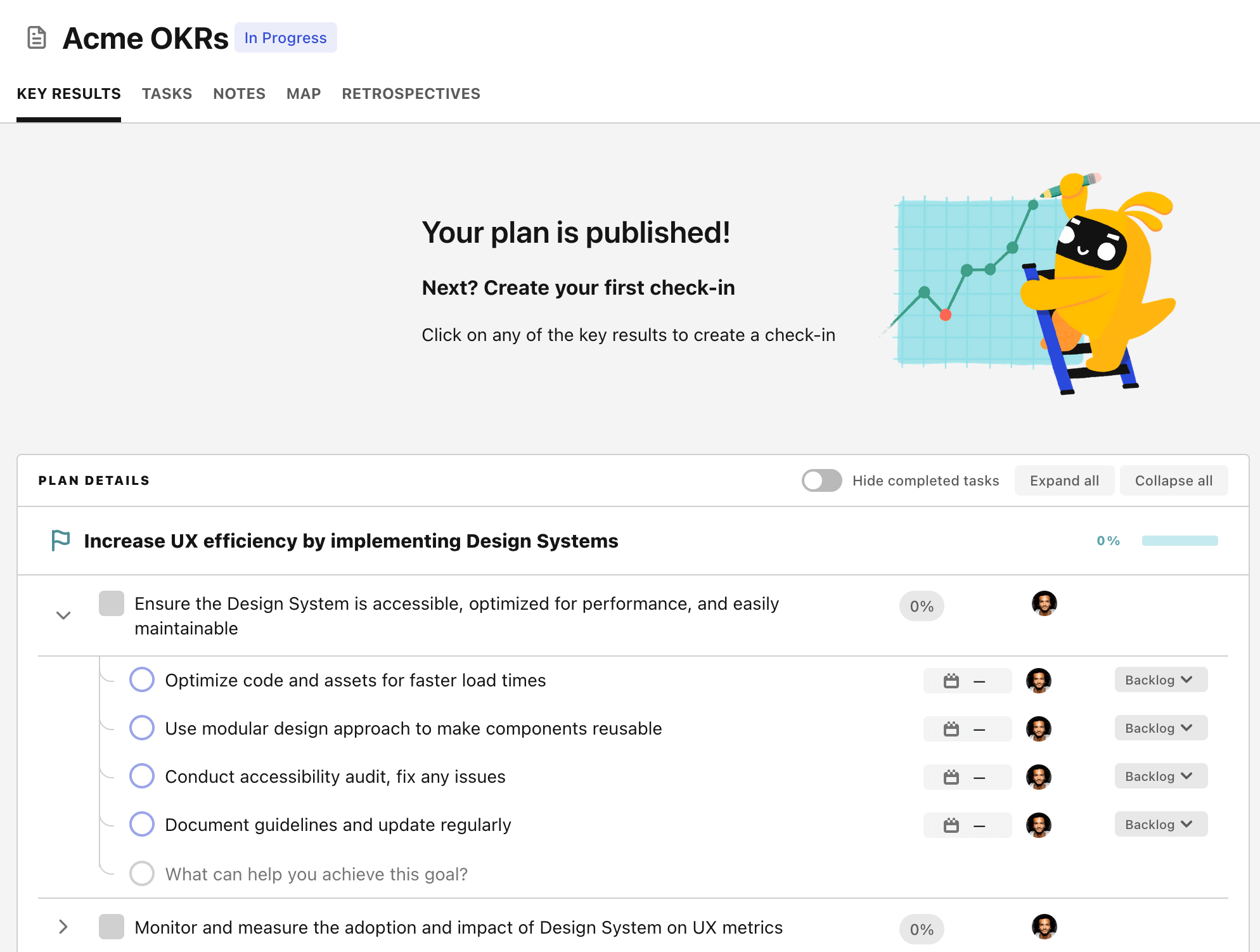OKR template to successfully develop and implement team roadmap and OKR
Your OKR template
For this, several initiatives are proposed, including providing relevant training to enhance team members' skills, implementing a productivity tracking mechanism for accuracy, and setting clear, measurable goals to track progression. These steps would drive the campaign to improve teamwork and optimize output.
Secondly, the OKR targets an impressive 90% completion rate for assigned tasks. The sponsoring team intends to develop a comprehensive daily task completion plan, prioritize duties according to their importance and imminent deadlines, and minimize distractions to promote focus, thereby maximising efficiency and productivity.
Lastly, the objective emphasizes defining explicit roles and responsibilities for all team members. The initiatives involve identifying individual skill sets and assigning specific roles accordingly, creating clear job profiles, and effectively communicating responsibilities and expectations to all team members.
ObjectiveSuccessfully develop and implement team roadmap and OKR
KRMeasure and improve team productivity by 20%
Provide adequate training to improve team skillset
Implement productivity tracking software for accurate measurement
Establish clear goals and track team progress
KRAchieve 90% completion of outlined tasks
Develop a daily task completion plan
Prioritize duties according to importance and deadline
Eliminate distractions to improve focus
KRDefine explicit roles and responsibilities for all team members
Identify individual skill sets and assign specific roles accordingly
Create clear job descriptions for each team member
Communicate responsibilities and expectations to all team members
How to edit and track OKRs with Tability
You'll probably want to edit the examples in this post, and Tability is the perfect tool for it.
Tability is an AI-powered platform that helps teams set better goals, monitor execution, and get help to achieve their objectives faster.
With Tability you can:
- Use AI to draft a complete set of OKRs in seconds
- Connect your OKRs and team goals to your project
- Automate reporting with integrations and built-in dashboard
Instead of having to copy the content of the OKR examples in a doc or spreadsheet, you can use Tability’s magic importer to start using any of the examples in this page.
The import process can be done in seconds, allowing you to edit OKRs directly in a platform that knows how to manage and track goals.
Step 1. Sign up for a free Tability account
Go tohttps://tability.app/signup and create your account (it's free!)
Step 2. Create a plan
Follow the steps after your onboarding to create your first plan, you should get to a page that looks like the picture below.

Step 3. Use the magic importer
Click on Use magic import to open up the Magic Import modal.
Now, go back to the OKR examples, and click on Copy on the example that you’d like to use.

Paste the content in the text import section. Don’t worry about the formatting, Tability’s AI will be able to parse it!

Now, just click on Import from text and let the magic happen.

Once your example is in the plan editor, you will be able to:
- Edit the objectives, key results, and tasks
- Click on the target 0 → 100% to set better target
- Use the tips and the AI to refine your goals
Step 4. Publish your plan
Once you’re done editing, you can publish your plan to switch to the goal-tracking mode.

From there you will have access to all the features that will help you and your team save hours with OKR reporting.
- 10+ built-in dashboards to visualise progress on your goals
- Weekly reminders, data connectors, and smart notifications
- 9 views to map OKRs to strategic projects
- Strategy map to align teams at scale